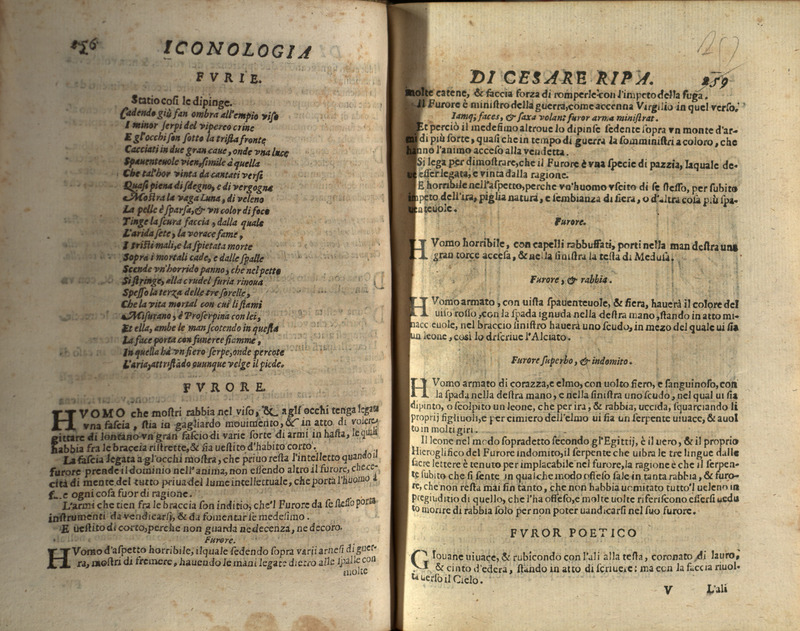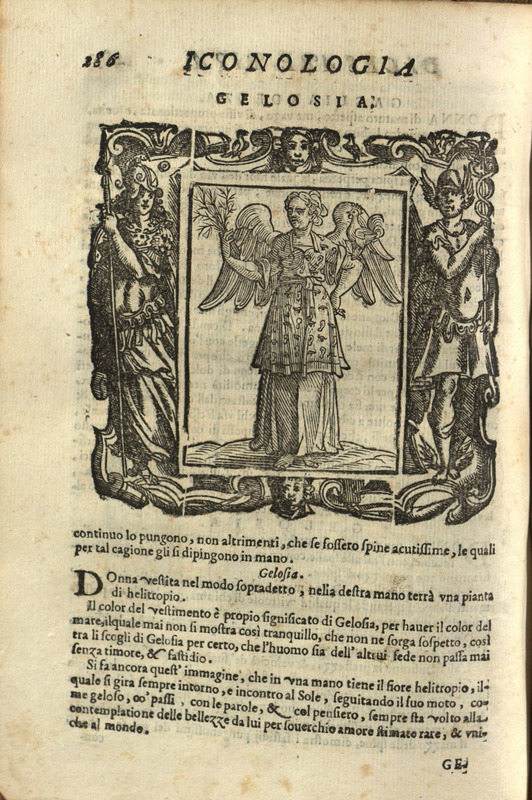The Envious Tooth of Time
Iconology of the Arts and the Emotions
Painting, for example, Ripa advised, should be represented as a woman holding brushes and her mouth covered (for painting, he explains, is mute) and she should wear a mask (because painting is foremost concerned with imitation). Ripa’s influence can be seen in the work of many artists of the seventeenth and eighteenth centuries, including Rubens, Bernini, and Poussin, as well as in the illustrations in some of the other books included in this exhibit, such the frontispieces of Gruterus and Pitscus.





